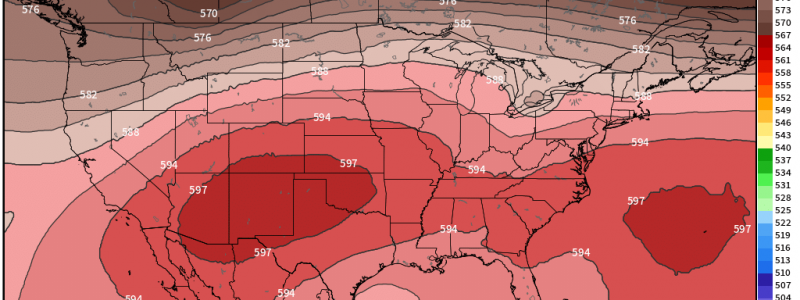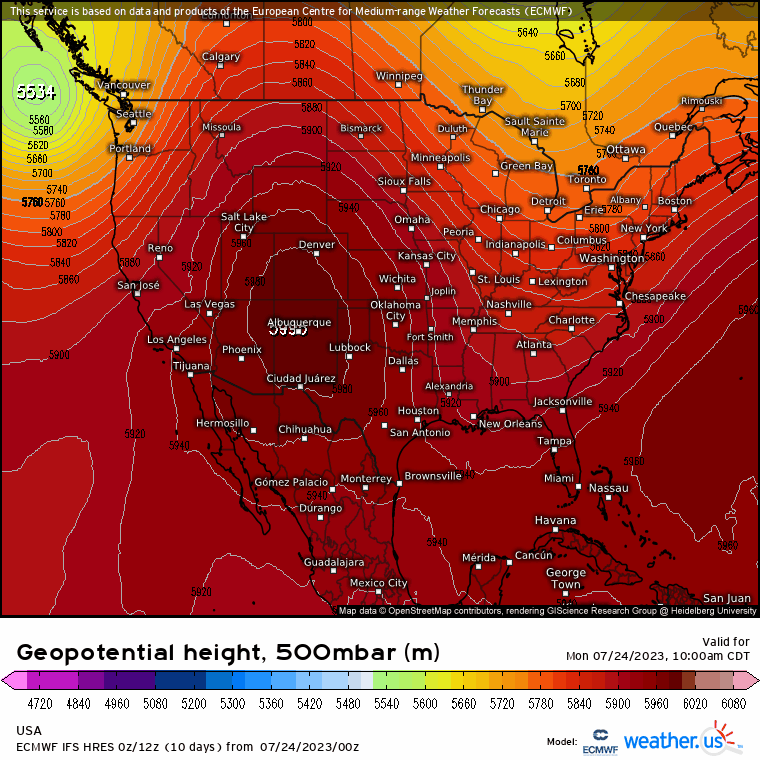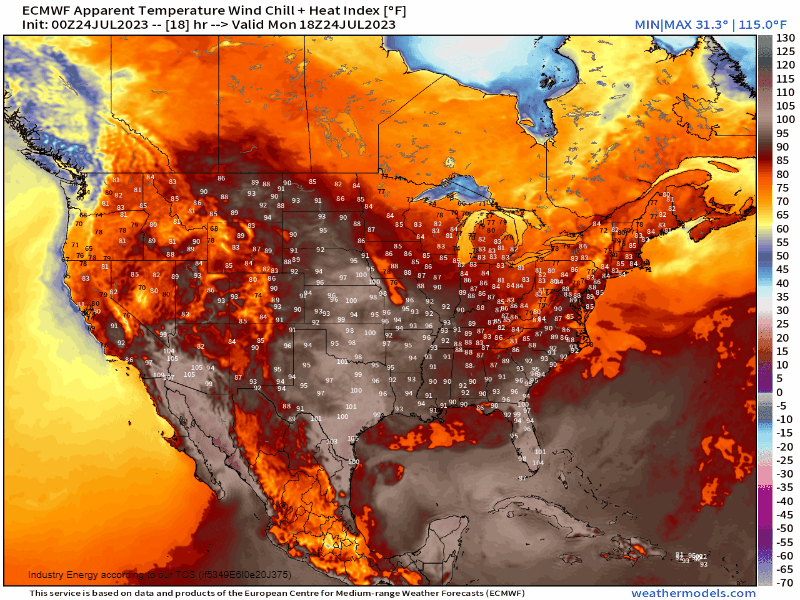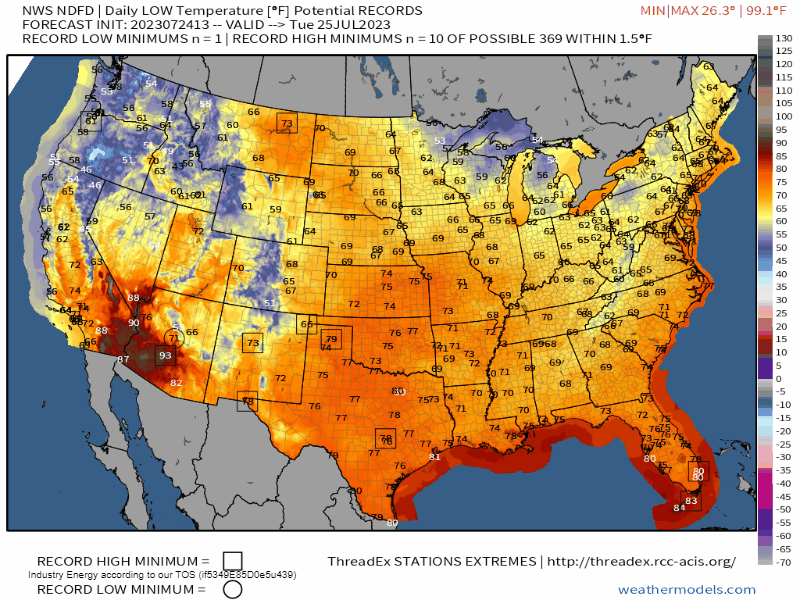
Western Heat Crawls Eastward This Week
As discussed in Friday’s blog, we’re still expecting the dangerous heat that has been impacting the Southwest to crawl eastward this week.

A ridge centered over the Southwest has begun to expand and will continue to do so as we move through the week. This will bring rising temperatures to those east of the Rockies.
I know I wrote on this subject Friday, as previously mentioned, but I wanted to touch on it again today since heat levels will likely become dangerous for many as the week wears on.
Those of us east of the Rockies are used to moist air when the flow is generally southerly, off of the Gulf of Mexico. We also know that as both the dew points and temperatures creep up, it becomes increasingly unbearable outside. That’s what’s on tap for the week ahead.

As the heat and humidity build, “feels like” temperatures will become increasingly dangerous. By the weekend, a large portion of the eastern half of the US could be experiencing heat indices of 100 degrees or more. This will likely lead to widespread Heat Advisories and Excessive Heat Watches/Warnings.
- Heat Advisories are issued when the maximum head index temperature is expected to be 100+ degrees for 2 or more days. Additionally, nighttime temperatures above 75 degrees are expected.
- This definition can vary depending on the region as some regions are accustomed to hotter temperatures than others.
- Excessive Heat Watches are issued when conditions are expected to become favorable for an excessive heat event in the next 24 to 72 hours.
- Excessive Heat Warnings are issued when maximum the maximum heat index is expected to reach or exceed 105 degrees for 2 days at a minimum. Additionally, nighttime air temperatures during this period aren’t expected to drop below 75 degrees.
- As with a Heat Advisory, this definition can vary by region.
For more on heat advisories/watches/warnings, check out the NWS page found here.

As mentioned in the definitions above, while daytime highs are important in a warning/advisory, of equal importance is the nighttime lows.
As you can see from the map above, a large portion of the eastern US will experience nighttime lows that do not drop below 75 degrees. This puts strain on the body.
The body uses cooler nighttime temperatures to reset from the heat of the day. If the nighttime isn’t sufficiently cool, the body is unable to reset and heat exhaustion/stroke becomes more likely.
So, what can you do to help yourself (and others) as the heat settles in?
- Reduce or reschedule outdoor activities to avoid exposure to sun and excessive heat.
- Wear lightweight, loose-fitting, light-colored clothing.
- Stay hydrated. Drink water even if you don’t feel thirsty.
- Stay cool as best you can.
- Use air conditioning if available.
- Keep your shades closed during the day to reduce how much your home heats up.
- Take cool showers or baths if needed.
- Check on your friends, family, and neighbors – especially if they are older or ill. Make sure they are staying cool and offer help if needed.
These and other tips can be found via the National Weather Service.
It appears as if the heat will linger for at least the next week – especially over the Central and South/Southeastern states. We will, of course, keep you updated on the latest information. Stay safe and stay cool!











